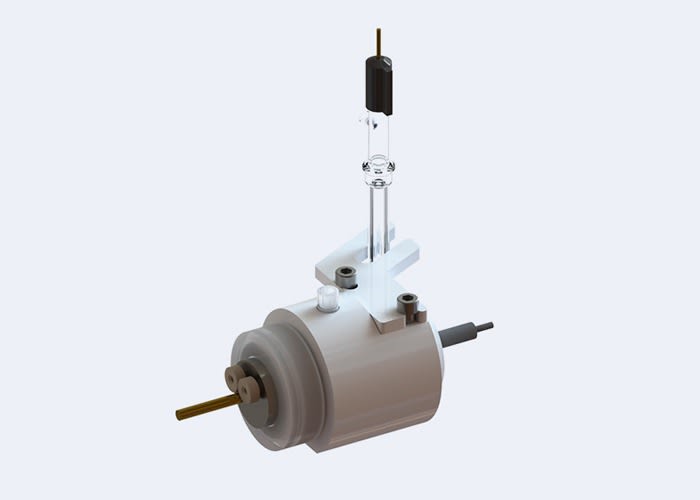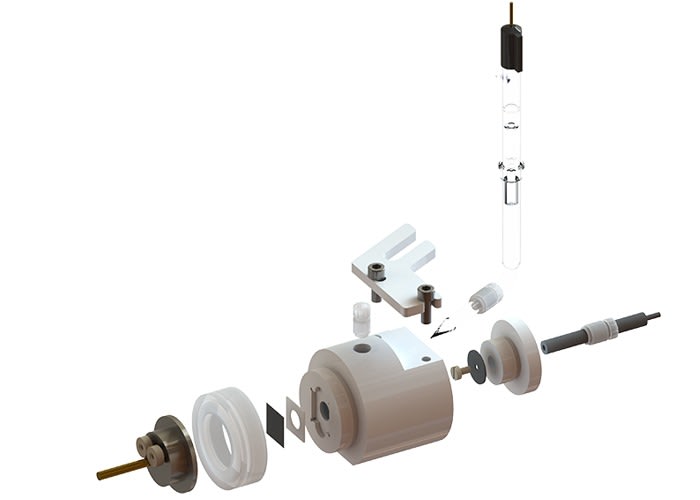
Semi Battery Test Cell
The Semi Battery Test Cell is a precision electrochemical fixture for half-cell studies. Its stainless steel body with PEEK/PTFE insulation isolates working electrodes from Li/Na counter electrodes, enabling CV, EIS and cycling tests in glovebox use.
Description
Principle of Operation
The Semi Battery Test Cell is a precision-engineered electrochemical test fixture designed for half-cell and asymmetric battery studies. It enables detailed evaluation of electrode behaviour under controlled electrochemical cycling conditions, offering a clear understanding of anode–cathode interactions, electrode kinetics, and ion-transport mechanisms.
Unlike a full-cell design that includes both active electrodes, the semi-cell architecture uses a reference/counter electrode (commonly lithium metal) paired with the working electrode of interest. This configuration allows researchers to isolate and study individual electrode performance, potential profiles, and redox reversibility without the complexity of a complete cell system.
Key Features & Specifications
- Body Material: High-strength stainless steel with excellent corrosion resistance.
- Insulation Components: PEEK and PTFE spacers to ensure robust electrical insulation.
- Sealing System: Chemically resistant O-rings for leak-proof operation, even with volatile electrolytes.
- Electrode Configuration: Supports circular electrodes (up to φ16 mm) and lithium or sodium metal counter electrodes.
- Assembly: Screw-type compression design for uniform pressure distribution and repeatable contact resistance.
- Observation Options: Transparent window or removable top cap for electrode inspection.
- Reusability: Modular and easy to clean for repeated experimental cycles.
Compatibility
The Semi Battery Test Cell integrates seamlessly with potentiostats, battery cyclers, and electrochemical workstations for advanced testing such as:
- Galvanostatic charge–discharge and cyclic voltammetry (CV).
- Electrochemical impedance spectroscopy (EIS) for interface characterisation.
- In-situ spectroscopy coupling (Raman, FTIR) when combined with compatible optical modules.
This cell is particularly suitable for glovebox environments, allowing assembly under inert conditions to protect air-sensitive materials.
Typical Applications
- Evaluation of anode/cathode materials for Li-ion, Na-ion, and Mg-ion batteries.
- SEI formation and electrolyte compatibility studies.
- Half-cell kinetics and potential–capacity profiling.
- Cycle-life testing of electrode materials prior to full-cell assembly.
- Research in solid-state electrolytes and conversion-type electrodes.
Customer Reviews
Related Product
Explore our precision instruments designed for electrochemical research and energy applications
Still Wondering About Something?
Explore our FAQ for fast, clear answers to the most common questions—available 24/7.





